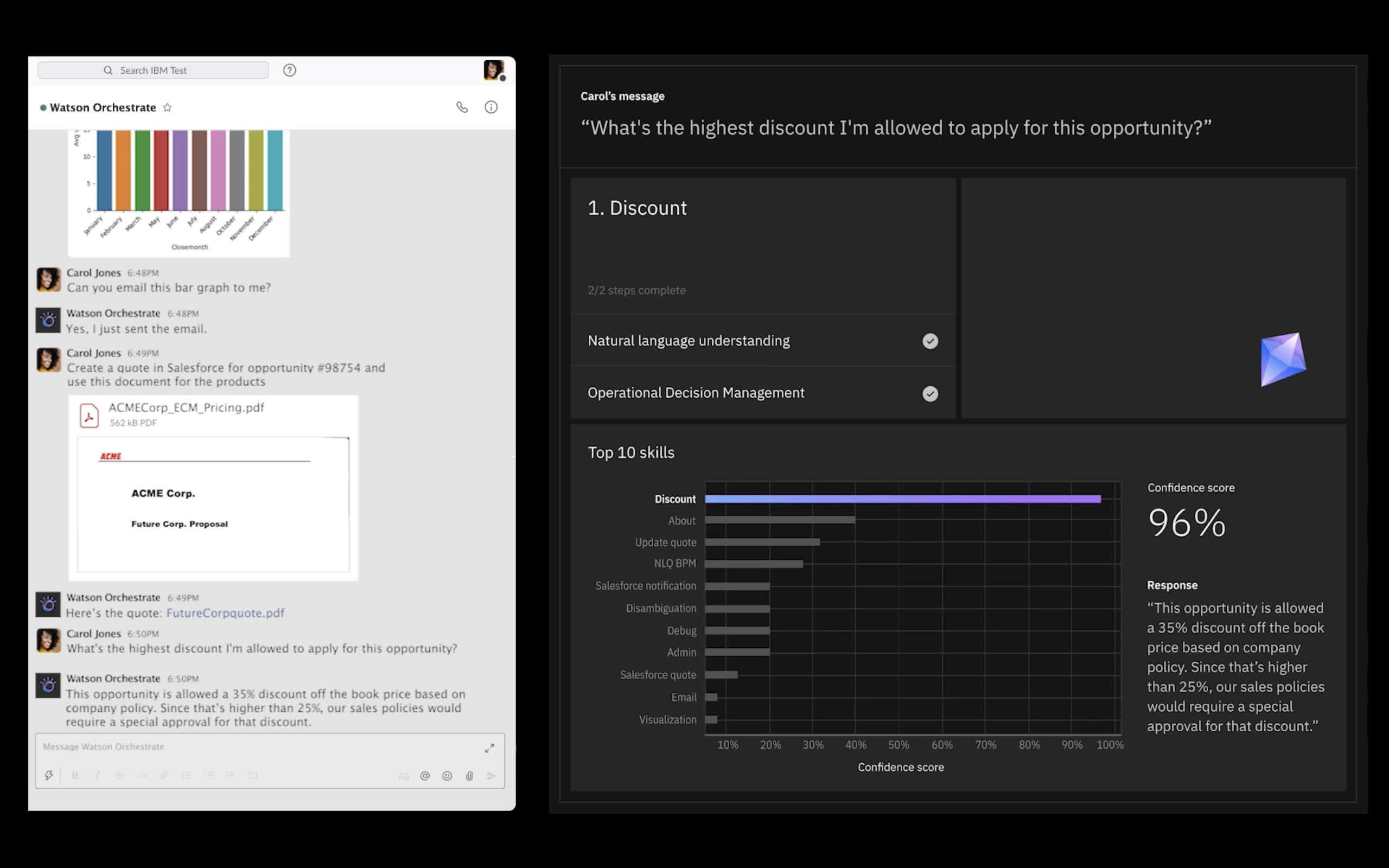One of the interesting but also frustrating things about the world of enterprise software is that it either gets talked about in high-level generalities, or excruciating levels of technical detail. In other words, it is either all about creating new solutions to digitally transform businesses, or it’s about which API calls can be leveraged in Kubernetes-compatible container platforms to ensure that the appropriate SLAs for a given application are met.
This can make it very challenging to figure out exactly what a company is trying to say when it introduces a new product or service. It can also make it difficult to determine how important (or not) some of those announcements really are.
Thankfully, not all new products are so complicated, as IBM’s recent Think event illustrates.
The new Watson Orchestrate is an AI-powered software tool designed to simplify and automate the process of finding and combining appropriate sets of data for a given task. It lets people use the same tools on their workflow like email, Slack, Salesforce, Workday, and SAP to achieve these efforts. More importantly, it does so without the need for building sophisticated data queries that require the expertise of a data scientist.
In other words, Watson Orchestrate enables regular businesspeople to gain access to the enormous pools of data that many companies have, but which very rarely are being fully utilized. To use the enterprise software lingo of the day, it’s like a low code/no code version of robotics process automation (RPA).

Though some may shrug their shoulders and say, “so what?”, the truth is, this can have a meaningful impact on businesses that haven’t been able to take advantage of their data. For years now, many software and services companies have been loudly touting the incredible data collection and data gathering tools they’ve built, and they’ve highlighted the types of insights that are possible if these large data sets are appropriately leveraged. Along with these big promises have been implications around the ability to actually make intelligent use of all that data.
Unfortunately, as with many other instances in enterprise software, the devil is in the details of how intelligent data extraction needs to be done. Turns out, it's really hard to do it effectively and do it well. In many cases, the promised capabilities are reliant on the expertise of data scientists. The unspoken problem is that the sum total of these specialists is very small, and all of them are in extraordinarily high demand. The result is that the promise of big data remains unfulfilled for most organizations.
Recognizing that, IBM set out to leverage its Watson AI-powered tools to help make that process significantly easier and more democratized. Given that the company is only announcing early access to these capabilities via the IBM Automation Cloud Pak, the real-world performance of Watson Orchestrate remains to be seen, but the logic behind the product makes a good deal of sense.
It’s also important to bear in mind that Watson Orchestrate is only one of several automation-focused efforts upon which IBM has recently embarked. The company recently unveiled a new version of its Cloud Pak for Watson AIOps, which brings together several tools designed to automate time-intensive, but often tedious, IT management and operations tasks, such as multi-cloud application management, in order to free IT personnel to work on other more fulfilling tasks. The new version 3.1 also integrates the capabilities of Instana’s application performance management tool, which IBM recently purchased.
Instana can do things like automate the process of tracking software dependencies across highly distributed containerized applications. Given how many individual software elements can now go into these applications, this is a significant real-world problem.
Equally interesting is IBM’s recently announced intention to purchase Turbonomic, a company that offers conceptually similar tracking for all the different hardware resources that are used in cloud applications. As with Instana on the software side, manually tracking these kinds of resources has become impractical, making automation of these processes absolutely essential to their operation. IBM also recently participated in a very different type of automation application via its involvement with the Mayflower autonomous sea vehicle, which is set to cross the Atlantic on its own, following the path of its colonial namesake.
Looking at all these efforts in sum, it’s clear that IBM sees automation as an essential part of its enterprise software efforts moving forward. It's also obvious the company is working to integrate these capabilities across as many areas as possible. Enterprise software remains an enormously complex and complicated arena, but IBM is taking steps to try to simplify the automation part of the equation.
Bob O’Donnell is the founder and chief analyst of TECHnalysis Research, LLC a technology consulting firm that provides strategic consulting and market research services to the technology industry and professional financial community. You can follow him on Twitter @bobodtech.
https://www.techspot.com/news/89631-ibm-simplifies-automation-watson-orchestrate.html